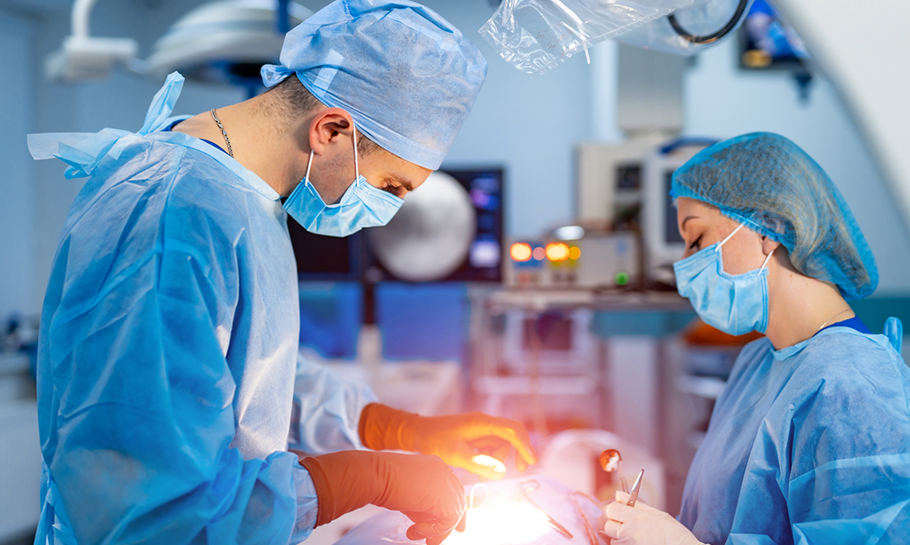Cardiothoracic Surgery

Bypass Grafting
Your physician may recommend bypass grafting surgery if blood flow in your limb is blocked or nearly blocked. For this surgery, your physician uses a blood vessel from another part of your body or a man-made tube to make a graft. This graft bypasses (that is, goes around) the blocked part of the artery. The bypass allows blood to flow around the blockage. This surgery doesn’t cure PAD, but it may increase blood flow to the affected limb.
Open Heart Surgery
Valves between each of the heart's four pumping chambers keep blood flowing forward through the heart. Valves might need to be replaced if they become stiff or if they become leaky (meaning the blood leaks backward). Repairing or replacing valves within the heart takes the skill of a cardiovascular surgeon. In the heart’s complex operating system, sometimes the parts don’t work together properly. Valves can often be repaired, but sometimes require replacement altogether. Our team has over 20 years experience in aortic valve replacement.
SIH cardiothoracic surgeon, Dr. Russell McElveen, performs a less invasive valve surgery called a mini AVR requiring minimal incision and minimal trauma.
Traditionally an aortic valve is replaced by means of a median sternotomy: a 10- to 12-inch vertical inline incision along the sternum, after which the sternum itself is opened. In mini-AVR, the surgeon makes a 2- to 3-inch incision between the ribs on the right chest. The artificial valve is sutured in place using the parachute technique.
Carotid Endarterectomy
If the arteries are very narrow, you may need an operation called a carotid endarterectomy to remove the plaque. This procedure removes plaque buildup from an artery by inserting a small cutting device into the blocked artery. The device is used to shave or cut off plaque. The bits of plaque are removed from the body through the catheter or washed away in the bloodstream.